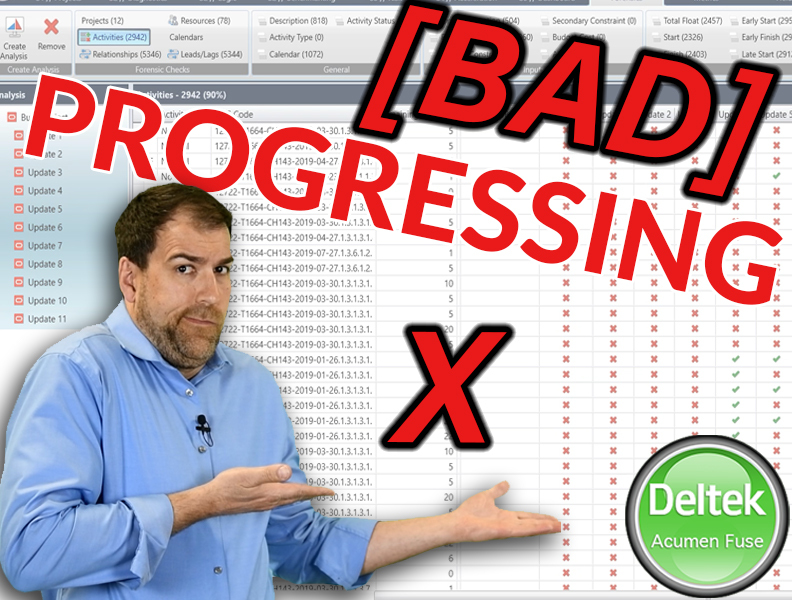How To Perform As-Planned Delay Analysis On A Construction Schedule
When there are delays on a construction project and a delay claim has been issued, it’s vital to determine who caused the delays and what happens next.
Forensic Delay Schedule Analysis is broad area of expertise in project controls whereby a set of techniques are used to analyze a schedule and figure out who is at fault, whether a Time Extension should be granted and if there’s monetary compensation owing because of the delay.
Between a Contractor and the project’s Owner, there must be an agreement as to who caused the schedule delay and whether it can be categorized as one of these delay types:
- Excusable / Non-Excusable
- Non-Excusable
- Critical / non-Critical
- Compensable
- Concurrent
To reach agreement, we need a forensic scheduling expert to perform an analysis on the project’s CPM schedule.
Check out our live course on Forensic Delay Analysis.
Impacted As-Planned Delay Analysis
There are various ways to perform a delay analysis on a CPM schedule. The Impacted As-Planned method is one of the most straightforward analysis techniques.
We will start with the As-Planned schedule; this is typically your last approved baseline or the project schedule as it was planned to be executed.
The Impacted As-Planned technique is called an additive technique because you will be adding delays to the As-Planned schedule to determine the impacts of those delays.
Why do you add delays to the As-Planned?
Think of it this way. It’s like you are saying;
“Before I started ANY execution on the project, if I had known about these delays in advance, what would the impact have been to the project?“
This type of analysis is often done after-the-fact, after the project is completed to determine how delays affected the outcome of the project.
When to perform an As-Planned Analysis
- Before the project starts, if you wish to predict or forecast the effects of potential delays on the schedule. It could be part of a risk assessment.
- If the schedule hasn’t been properly updated during execution or is inadequate, you might be limited to using the As-Planned methodology, rather than another contemporaneous methodology.
- After a change or delay has occurred, after-the-fact, to determine how an Owner or Contractor delay affected the outcome of the project.
Here are the steps to perform the Impact As-Planned Analysis:
- Start with your As-Planned schedule, which is typically your baseline schedule.
- Identify the Critical Path and note the project’s finish date.
- Identify a delay event and its duration. Insert an activity into your schedule that represents the delay event and link it appropriately with relationship logic.
- Run CPM scheduling and note the impact to the project’s Critical Path and finish date.
- Insert any further delay events as activities into your schedule, one at a time. Run CPM scheduling after each insertion and note the impacts to the project.
Want to see Impacted As-Planned in action?
Watch the video excerpt from our Delay Detective – Forensic Schedule Analysis course. In the video, Dr. de la Garza will explain the procedure and concepts behind using the Impacted As-Planned technique to assess impacts on a construction schedule.
Disadvantages of the Impacted As-Planned delay analysis methodology
There are a number of analysis methodologies that be used in a forensic delay analysis. The Impacted As-Planned method was widely used in early days of CPM scheduling, but as we’ve become more sophisticated in our scheduling, As-Planned isn’t used today as it once was, for these reasons:
- Impacted As-Planned doesn’t take into account As-Built information
- Impacted As-Planned ignores the fact that critical path(s) can change as a schedule is progressed
However, in my opinion, the Impacted As-Planned method is simple to understand and it does provide a good starting point for schedulers who are interested in growing their knowledge of Forensic Delay Analysis. It also provides a good basis for learning other more sophisticated methods such as Time-Impact Analysis.
Interested in learning other Forensic Delay Techniques?







